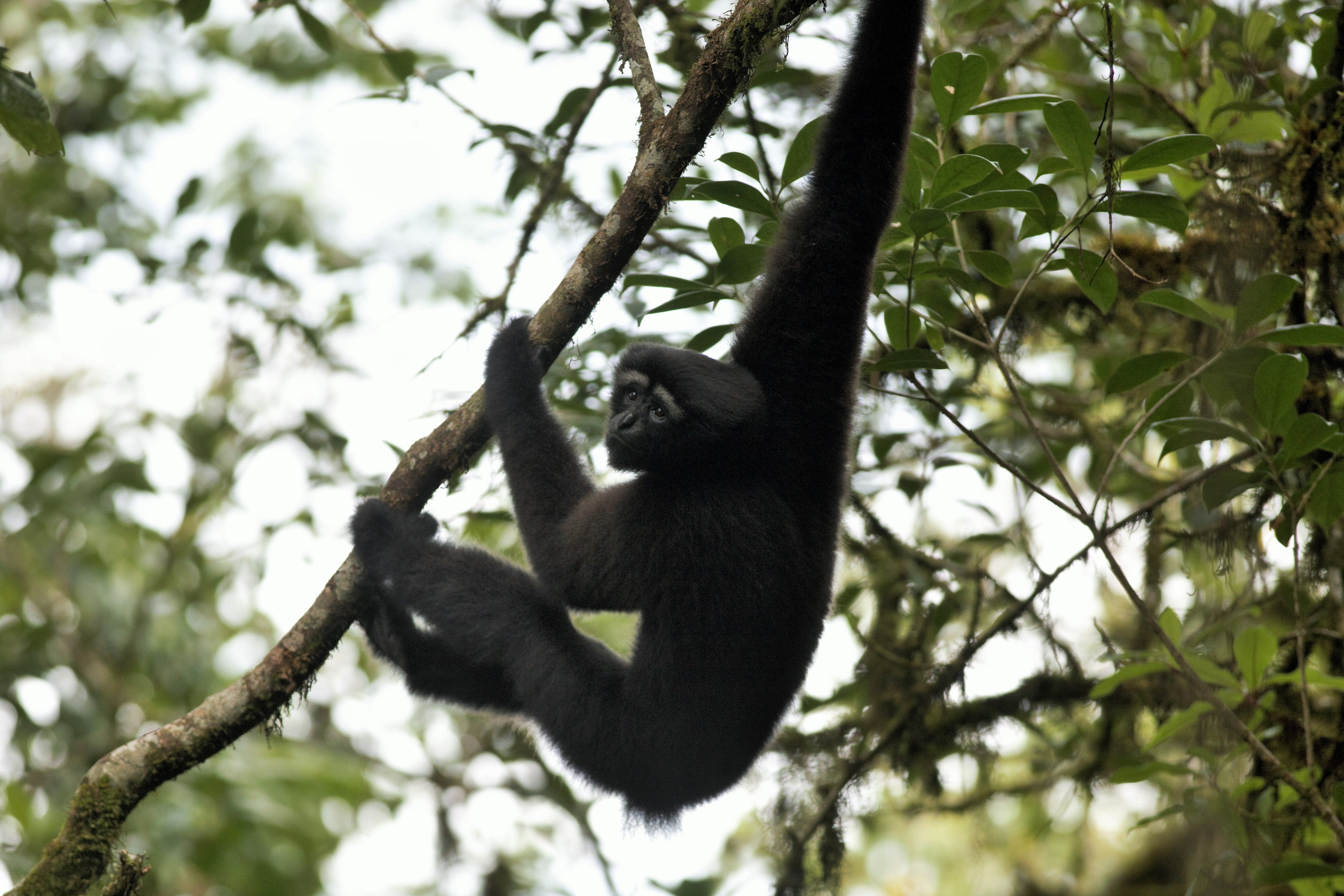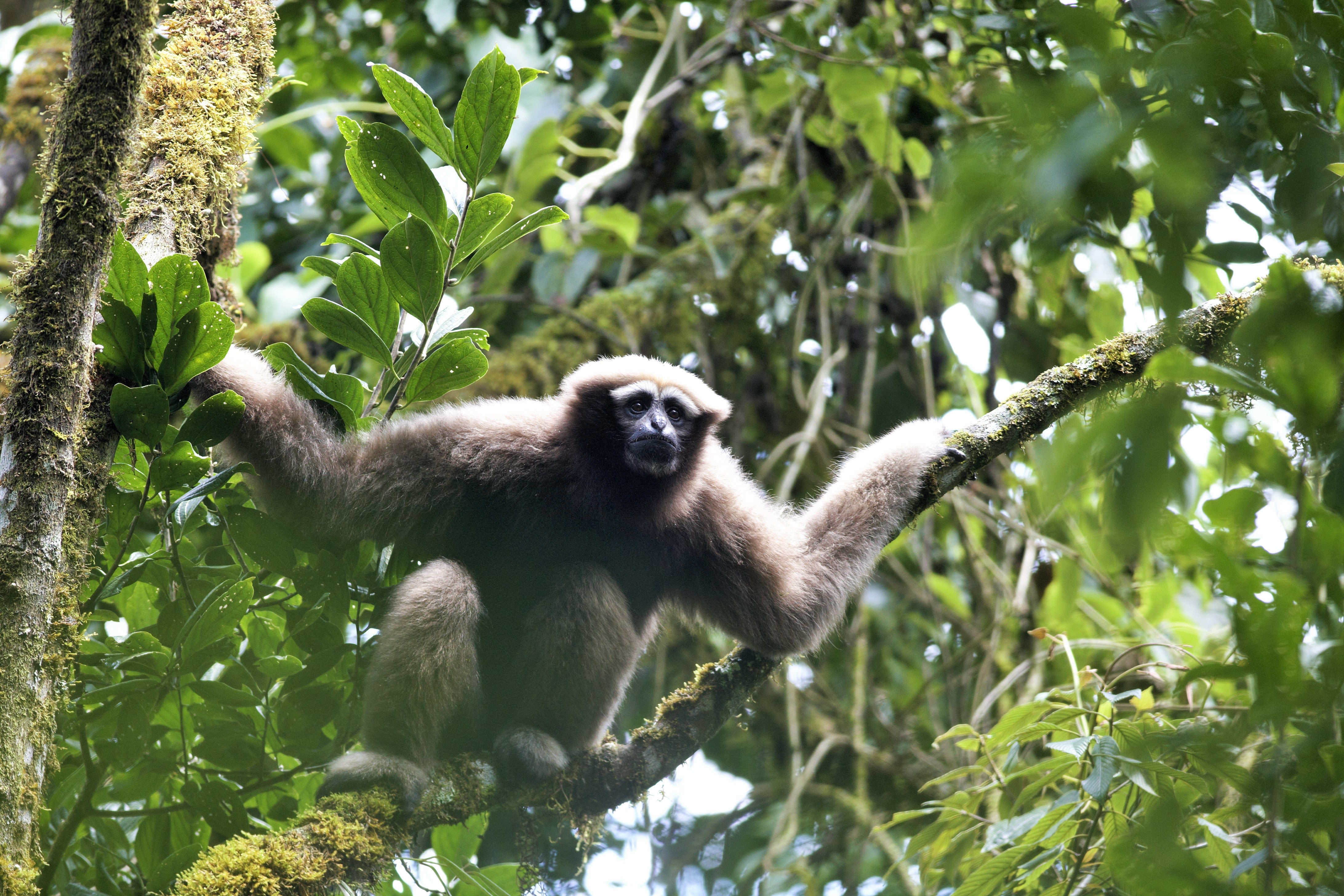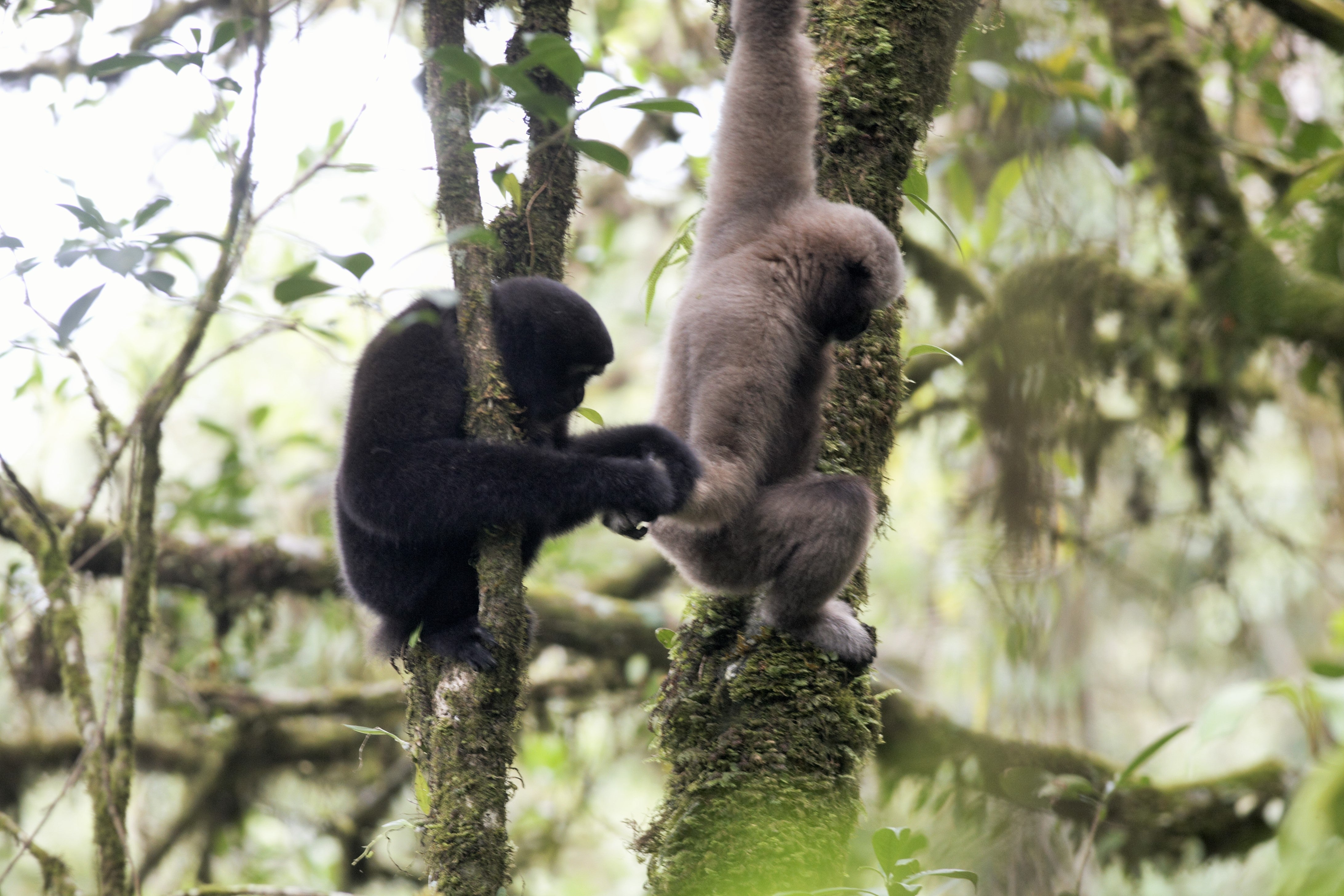
Love Songs Lead Scientists to New Populations of Skywalker Gibbons in Myanmar
The Endangered Primate’s Love Songs Alerted Scientists to Their Home Beyond China
From UC Davis News
Skywalker gibbon couples wake up each morning and sing to each other, their voices echoing across the forest canopy of their home. The primate’s endearing love song helped scientists confirm what was formerly a strong hunch: Myanmar has the largest population of endangered Skywalker gibbons on Earth.
When Star Wars-loving scientists identified Skywalker gibbons as a distinct species in 2017, fewer than 200 individuals were known to exist, all in southwestern China. A study published today in the International Journal of Primatology is the first in the past century to confirm living Skywalker gibbons in Myanmar.
The study was led by the Karen C. Drayer Wildlife Health Center at the University of California, Davis, which facilitated the formation of the Myanmar Skywalker Gibbon Conservation Committee. Led by Myanmar investigators and composed of Myanmar nongovernmental organizations, the group was tasked with leading these important discoveries in their country. Field expeditions were conducted by partner organizations, including Nature Conservation Society Myanmar and Fauna & Flora – Myanmar.
“We were able to genetically identify 44 new groups of Skywalker gibbons in Myanmar,” said senior author Tierra Smiley Evans, research faculty with the One Health Institute in the UC Davis School of Veterinary Medicine. “This is a huge resource and success story for Myanmar.”

An adult male Skywalker gibbon (H. tianxing) hangs from a tree branch. Genetic analysis of chewed plants confirmed the previously unknown population of Skywalkers in Myanmar. (Peng-Fei Fan)
Exact numbers of individuals are unknown, but Skywalkers were identified in areas previously thought to be occupied by the Eastern hoolock gibbon. Population estimates from 2013 suggested that there could have been up to 65,000 gibbons in the area where Skywalkers have now been identified, making this the largest probable population of Skywalker gibbons in one place.
Scientists suspect today’s actual numbers are lower given ongoing hunting, limited protected areas and political unrest in Myanmar.
Love songs and chewed plants
Like their Jedi namesake, Skywalker gibbons cannot swim, so rivers tend to demarcate their species boundaries. This led scientists to think Skywalkers likely extended into Myanmar between two rivers to the west and another to the east, but their theory remained unconfirmed until this study.
Safety concerns related to civil and ethnic unrest, on top of a global pandemic, have limited primate surveys in Myanmar, especially by foreign scientists. Smiley Evans said the study was possible only through the efforts of the Myanmar field research team.
Between December 2021 and March 2023, the field team in Myanmar set up acoustic monitoring systems, listening each morning for the Skywalker gibbons’ love songs, recording their solos and duets, their start and end times.
Listen to Skywalker gibbons singing in Yunnan province. (YouTube/Skywalker Gibbon)
Using a noninvasive DNA sampling technique created by Smiley Evans, they then collected chewed plants and fruits from the gibbons. Genetic analysis of these samples confirmed the species.
The team examined photographs for characteristics that distinguish between Skywalker hoolock gibbons and other hoolock species. These include thinner eyebrows, a black or brown beard instead of a white one, and incomplete white face rings on the females.
They also conducted threat assessment surveys in 12 villages to gather local knowledge about gibbons and the threats they face.
“Biologists did not believe Skywalker gibbons could live in the small remaining patches in Southern Shan State before we started this project,” said Pyae Phyo Aung, executive director of Nature Conservation Society Myanmar. “I am delighted with our field team members who have done an excellent job, within a short period of time, building community trust for further conservation actions. This area is degraded forest. It is really important for Myanmar and China to consider extending conservation approaches for the Skywalker gibbon to this new geographic area.”

Distinguishing characteristics of Skywalker hoolock gibbons compared to other gibbons include thinner eyebrows, a black or brown beard instead of a white one, and incomplete white face rings on the females, like this adult. (Peng-Fei Fan)
Red List guidance
The findings will help guide updates for the International Union for the Conservation of Nature’s (IUCN) Red List of Threatened Species.
While the findings raise the population estimates of Skywalker gibbons, ongoing habitat loss, degradation and human conflict in Myanmar continue to threaten the species, most of which live outside protected areas.
For those reasons, the authors suggest the species retain its Endangered designation on the IUCN Red List and that its habitat in Myanmar be considered for protected area status.
“We found Skywalker gibbons in two regions of Myanmar: Kachin State and as far south as Shan State, in degraded forests and at much lower elevations than we expected, showing us they’re highly adaptable,” Smiley Evans said. “There needs to be a protected area system there that focuses on them.”

Skywalker gibbons were found in areas previously thought to be occupied by the Eastern hoolock gibbons, like this pair. (Peng-Fei Fan)
This study was a team effort with co-authors from the University College London, Zoological Society of London, German Primate Center, Livestock Breeding and Veterinary Department Myanmar, Myanmar Timber Enterprise, California National Primate Research Center, Sun Yat-Sen University and the IUCN Species Survival Commission (SSC) Primate Specialist Group Section on Small Apes.
The study was funded by Arcus Foundation, the IUCN SSC Primate Specialist Group Section on Small Apes, National Science Foundation and the International Centre for Integrated Mountain Development
Media Resources
Media Contacts:
- Tierra Smiley Evans, UC Davis School of Veterinary Medicine, tsmevans@ucdavis.edu
- Kat Kerlin, UC Davis News and Media Relations, 530-750-9195, kekerlin@ucdavis.edu
Press kit of images of Skywalker gibbons. Photo credit: Peng-Fei Fan.
